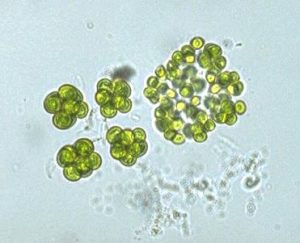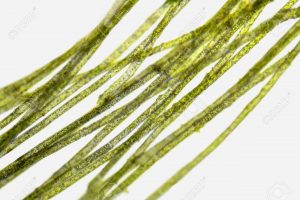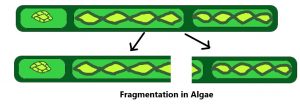Contents:
CHLOROPHYTA
- G.M. Smith proposed a new classification (in 1955) with certain modifications, supporting the classification proposed by Pascher.
- He divided algae into seven divisions and further into classes.
- The first division of Smith’s classification is Chlorophyta.
- Chlorophyta comprises most of the described species of green algae.
- Chlorophyceae (eg: Volvox) and Charophyceae (eg: Chara) are the two classes under the division Chlorophyta.
- Below are the general characteristics possessed by the classes of Chlorophyta.
OCCURRENCE
- They are mostly aquatic and predominantly freshwater algae.
- 10% of the aquatic green algae are marine.
- Some are terrestrial.
- Many species of Chlamydomonas, Volvox, and Chlorella are frequently found in freshwaters.
- The terrestrial forms grow on moist aerated soils, rocks, and cliffs.
- Hormidium and Chlorella are found on loam cultivated soils.
- Subaerial forms occur on moist tree trunks, moist walls, and rocks.
- Ulothrix and Zygogonium are sub-aerial.
- Some are found as planktonic organisms in marine environments.
- They occur in dense populations causing blooms in tidal pools or bays.
- Examples of marine green algae are Ulva (sea lettuce), Codium, Enteromorpha, Cladophora.

RANGE OF THALLUS ORGANISATION
- Green algae are a heterogenous
- They exhibit a wide range in their thallus structure from simple microscopic motile unicellular forms through multicellular flagellated or non-flagellated colonies.
- Unicellular forms may be motile or non-motile.
- In unicellular motile thallus form, vegetative cells have two or four flagella and are motile. Eg: Chlamydomonas, Sphaerella.
- Unicellular non-motile thallus does not possess flagella, meant for locomotion. Eg: Chlorella.
- The colonial habit is achieved by aggregation of the products of cell division within a mucilaginous mass. They possess three different types of colonial forms.
- Coenobium: A colony with a definite shape, size and arrangement of cells. Maybe motile with flagella (Eudorina, Volvox) or non-motile without flagella (Pediastrum, Hydrodictyon)
- Palmelloid: The number of cells, their shape and size are not definite. Eg: Chlamydomona, Tetraspora.
- Dendroid: The colony appears like a microscopic tree. The number, shape and size of cells are indefinite. Eg: Ecballocystis.

- Filamentous forms are of seven types:
- Filamentous unbranched – Ulothrix, Oedogonium
- Filamentous branched – Cladophora
- Heterotrichous (The thallus is very much evolved and differentiated into prostrate and erect systems) – Fritschiella, Coleochaete
- Siphonaceous (The thallus is made up of branched, aseptate, coenocytic, tubular filaments as the nuclear divisions are not accompanied by wall formation) – Protosiphon, Codium
- Parenchymatous (Thallus is formed by the divisions of cells) – Ulva, Enteromorpha
- Complex forms (The thallus is highly developed with well-differentiated tissues) – Chara

CELLULAR STRUCTURE
- Green algae are eukaryotic
- Have a well-organized nucleus
- The cell wall is made up of non-living material i.e.,
- The flagella have a precise number and orientation of microtubules.
- Flagella are of equal length and are inserted at the anterior or apical end of the motile cells.
- The flagella are of whiplash-type.
- The thylakoids of green algae are much larger.
- The thylakoids contain all the chlorophyll pigment of the chloroplast.
PIGMENTS AND RESERVE FOOD
- Chlorophyll a, chlorophyll b, and carotenoids have been described from green algae.
- Both carotenes and xanthophylls are present in green algae.
- Green algae store starch as their reserve food in the plastids.
REPRODUCTION
- There are three common ways of reproduction in green algae: vegetative, asexual and sexual.
- In the vegetative mode of reproduction, the algal body cuts off or break and gives rise to new individuals. The process is known as fragmentation.

- Vegetative reproduction also occurs by the formation of akinetes which are specially thickened vegetative cells.
- In some filamentous forms, fragmentation is common.
- Asexual reproduction takes place by zoospores. Common in Ulothrix, Chlorococcum.
- Sexual reproduction in green algae takes place by fusion of gametes or by the exchange of genetic information through conjugation.
- Sexuality in green algae is largely controlled by environmental factors such as light, temperature and nutrition.
- Sexual reproduction can be seen in Chlamydomonas and Pandorina.
LIFECYCLE
- Green algae have a haplontic life cycle.
- All phases except zygote are haploid.

REFERENCES
-
https://microbewiki.kenyon.edu/index.php/Chlorophyta#:~:text=Chlorophyta%20are%20photosynthetic%20organisms%2C%20obtaining,isogamous%2C%20anisogamous%2C%20or%20oogamous.
-
https://www.sciencedirect.com/topics/agricultural-and-biological-sciences/chlorophyta